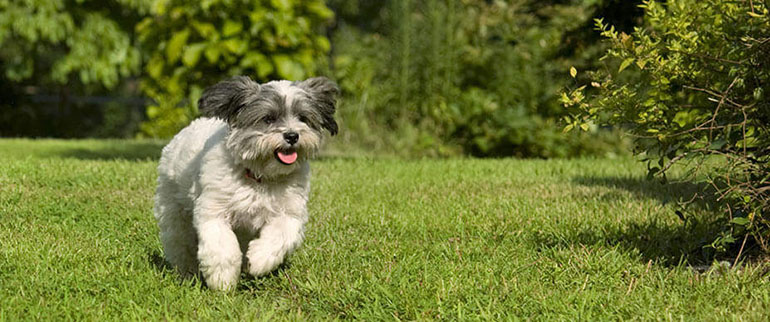
Wireless Fence For Dogs
If you’re a dog owner looking for a way to keep your furry friend safe and contained in your yard, a wireless fence could be the solution you need. A wireless dog fence is an invisible boundary that’s created using a transmitter and receiver collar. It allows you to set customized boundaries for your dog and provides a safe and effective way to prevent escapes without installing a physical fence. But what exactly is a wireless fence, and how does it work? Here’s everything you need to know.
Types of Wireless Fences
Wireless fences for dogs come in different types, catering to various needs and preferences. Choosing the right type can be overwhelming, especially if you are new to the technology. In this article, we’ll discuss the different types of wireless fences for dogs and highlight their unique features and benefits to help you make an informed decision.

Traditional vs. Electric Dog Fences
When it comes to keeping your furry friend safe and contained, traditional fences have long been the default choice for pet owners. However, with the advent of electric dog fences, there is now another option available. In this section, we’ll compare and contrast traditional fences with electric dog fences to help you make an informed decision about which type of fence is best for your pup.
A traditional fence typically consists of wood, brick, vinyl o,r metal materials that are used to physically build a barrier around your property. This type of fence serves as a clear physical boundary between your property and the outside world, providing a sense of security and privacy. It also serves the purpose of containing your pet in a specific area.
Setting up a traditional fence can be a time-consuming and expensive process. First, the area where the fence will be placed needs to be measured and marked out. Then, holes need to be dug for the fence posts, and the fence panels or chain links need to be attached. Finally, gates need to be installed as well which adds a step to the process. Despite the lengthy and costly setup process, a traditional fence can offer many benefits – such as keeping predators and unwanted visitors out of your yard, providing a high level of containment for pets, and possibly even increasing your property value.
An electric dog fence, on the other hand, doesn’t require any physical materials. Instead, a wireless transmitter is installed on your property and a receiver collar is worn by your dog. The collar works by detecting a signal emitted from the transmitter, and when your dog gets too close, it will receive a static correction that will discourage it from crossing the boundary. Many electric dog fences allow pet owners to set up circular boundaries or precise boundaries, so you can customize the area where your pet is allowed to roam freely.
One of the main benefits of an electric dog fence is that it is cost-effective and easy to install compared to traditional fences. Since there is no physical barrier, there’s little to no maintenance needed for the fence. An electric dog fence is also easy to relocate if you move, and it can be used in areas where physical fencing is not allowed.
One advantage of traditional fences over electric dog fences is that there are no limitations on the size of the dog that can be contained. Traditional fences can work for any size or breed of dog, whereas electric dog fences may not be suitable for smaller dogs due to the size of the receiver collar. Additionally, an electric dog fence often requires the training of the pet and the supervision of the owner to ensure the collar is working properly. It’s important to note that electric dog fences can also fail during power outages, and some dogs may be able to tolerate the static correction and escape the boundary anyway. Traditional fences, while costly and time-consuming to install, offer a more foolproof way to contain your pet.
When it comes to choosing between traditional fences and electric dog fences, consider your lifestyle and the needs of your pet. For instance, if you own a large dog who is an escape artist, or if you have a busy lifestyle, an electric dog fence may be a more practical solution for you. On the other hand, if you have a small dog who may not tolerate the static correction or if you have a large property with a lot of wildlife or predators, a traditional fence may be a better option.
Virtual Fences for Dogs
Have you ever wished you could keep your dog safe without having to install a traditional or electric fence? Virtual fences for dogs may be just what you need. These innovative systems use GPS or radio signals to create boundaries for your pet to stay within, without the need for physical materials.
With virtual fences, you can set precise boundaries to ensure your dog stays within a certain area. This is especially useful for pet owners who want to keep their dogs safe from harm and prevent them from wandering off into dangerous areas. Virtual fences can also be effective in keeping wild animals away from your pets and can even be used to prevent dogs from entering areas such as swimming pools.
One of the biggest advantages of virtual fences is their ease of use. These systems are simple to set up and can be adjusted easily as needed. Additionally, virtual fences are reliable and can provide peace of mind for pet owners knowing that their pets are safely contained within the set boundaries.
Whether you have a small or large property, virtual fences for dogs can be a great alternative to traditional or electric fences. With the ability to set precise boundaries and keep your pets safe, these systems are an excellent choice for any pet owner concerned about their dog’s safety.
Ground-Based Dog Fences
Ground-Based Dog Fences, also known as In-Ground Dog Fences, offer a unique solution for pet owners who want to safely contain their furry friends without the need for erecting physical fences or using wireless alternatives. These fences use a buried wire to create a boundary that pets are trained to stay within. Unlike wireless dog fences that rely on radio signals, in-ground fences offer a more precise and reliable containment solution.
Installing a ground-based dog fence involves digging a trench around the perimeter of your yard or desired containment area and burying the wire at a certain depth. Once the wire is buried, it is connected to a transmitter that sends signals to a receiver collar worn by the pet. When the pet gets too close to the buried wire, the collar emits a warning beep or a static correction to discourage them from leaving the designated area.
Ground-Based Dog Fences come in various models, but the top brands available in the market include the PetSafe In-Ground Fence System, Extreme Dog Fence Professional Grade System, and SportDOG Brand In-Ground Fence System. The PetSafe system features a wire break alarm that alerts you if the wire has been cut or damaged, while the Extreme Dog Fence system comes with surge protection to protect against lightning strikes. The SportDOG system, on the other hand, boasts a waterproof collar and four levels of static correction with a tone-only mode for training.
Overall, Ground-Based Dog Fences offer a reliable and customizable option for pet containment. With its in-ground installation, pet owners can create precise boundaries and keep their dogs safe from harm. The wire break alarm and surge protection features ensure that the fence remains functional, even during adverse conditions. Consider purchasing a ground-based dog fence system if you’re looking for a safe and effective way to contain your pet in your yard.
Invisible Dog Fences
Invisible dog fences, also known as wireless fences, are a popular option for pet owners who want to keep their dogs safe within a certain area without the need for a physical fence. Instead of burying a wire, like in ground-based dog fences, invisible dog fences use radio signals to establish a boundary around your yard. The system consists of a transmitter that sends the signal to a receiver collar worn by the dog. When the dog gets too close to the invisible fence, the collar emits a warning beep or a static correction.
The top options available in the market for invisible dog fences include the PetSafe Wireless Fence, the SportDOG Brand In-Ground Fence system, and the Extreme Dog Fence Professional Grade system. The PetSafe system is ideal for those who want to keep their dogs within a circular boundary and features a range of up to ½ acre. The SportDOG system can cover up to 1 1/3 acres and is equipped with four levels of static correction and a beep-only mode. The Extreme Dog Fence Professional Grade system is expandable up to 10 acres with a waterproof collar and adjustable correction levels.
One of the main benefits of using an invisible dog fence is that it is cost-effective compared to traditional fencing. It also maintains the aesthetic of your yard because no physical fence is needed. Moreover, dogs do not learn how to jump over or dig under the fence, making these types of fences ideal for escape artists. However, invisible dog fences also have some drawbacks. They are not reliable in containing dogs that are highly determined to escape, and the collar can malfunction if not used or maintained properly.
When choosing an invisible dog fence, there are some features to consider, such as the range of the fence, correction type, and battery life. Determine how much area you want to cover and ensure the range of the fence system will cover that area. Some invisible dog fences offer only a beep warning, while others offer static correction. Look for a fence with features such as rechargeable batteries and waterproof collars.
Two top-rated invisible dog fences are the Spot-On GPS Fence and the Halo Collar. The Spot-On GPS Fence utilizes GPS and phone app technology to establish a custom boundary around your property. It has an unlimited range and offers precise boundaries with real-time notifications. The Halo Collar also features GPS and has three levels of correction and a training mode, making it suitable for dogs of all sizes and temperaments.
Static Correction Training Collars for Dogs
Static correction training collars are a type of training tool used to correct dog behavior. Also known as electric collars or e-collars, they work by delivering a mild electric shock to the dog when it misbehaves. This shock is not harmful to the dog, but it provides an unpleasant sensation that discourages it from repeating the same behavior.
There are various types of static correction training collars available in the market. The main feature that distinguishes them is the levels of correction they offer. Some collars have only one level of correction, while others have multiple levels that you can set depending on your dog’s behavior. These levels can range from mild to intense and can be adjusted using a remote control.
Another feature to consider when choosing a static correction collar is its design. Some collars are waterproof, making them ideal for dogs that love to swim or play in the rain. Others feature rechargeable batteries, eliminating the need to constantly replace the batteries. Additionally, some collars have remote control options, allowing you to train your dog from a distance.
The effects of static correction on dog behavior can be significant. When used correctly, they can help correct undesired behaviors such as barking, jumping, and digging. They can also provide a form of positive reinforcement when used to reinforce positive behaviors such as sitting, staying, and coming when called.
It’s important to note that static correction training collars should only be used under the guidance of a professional trainer. Proper usage ensures that the dog understands the purpose of the correction and doesn’t become fearful or aggressive.
Furthermore, when purchasing static correction collars, it’s essential to consider the size of the collar. Most collars come in different sizes, accommodating different neck sizes, to ensure that the collar fits comfortably and securely on your dog.
Necessary Components of a Wireless Dog Fence System
Wireless fence for dogs are becoming increasingly popular among pet owners who wish to keep their dogs safe and secure without the hassle of traditional physical fences. These systems consist of several key components that work together to create a virtual boundary within which the dog can roam freely. In this article, we will discuss in detail the necessary components of a wireless dog fence system.
Receiver Collar
The receiver collar is a crucial component of a wireless dog fence system. It is worn by the dog and receives signals from the transmitter/base station to determine the boundaries and circular boundaries that the dog must stay within. The collar emits a warning tone and then a static correction if the dog attempts to go beyond the designated area. The role of the receiver collar is crucial in orienting the dogs to the boundaries of their safe space and keeping them in check.
When selecting a good receiver collar, a few features should be considered. One essential aspect is the waterproof design of the collar receiver. Since dogs love water and may occasionally jump into a pool or stream, waterproof collars will prevent any malfunctions that may occur due to water damage. Another feature to consider is the battery life. A long battery life or rechargeable battery packs are preferred, so the collar doesn’t fail when it is essential. Finally, the collar should have adjustable settings to fit different neck sizes and ensure a snug fit around the dog’s neck.
In addition to these essential characteristics, various types of static correction training collars are available for dogs. These collars use different methods to correct the dog’s behavior. Vibrations, signals, and verbal commands are some types of static correction training collars. These correction methods are used to orient the dog to the boundaries of the wireless fence. These correction methods can be modified according to the dog’s size and personality and the owner’s preference.
Transmitter/Base Station
The transmitter/base station is the central component of a wireless dog fence system. It is an essential device that needs to be plugged into the center of your boundary area to set the location of the invisible fence and establish a safe area for your furry friend. It works by emitting radio signals that are picked up by the receiver collar worn by your dog, enabling him to understand the designated safe area.
It’s worth noting that the transmitter/base station doesn’t tell your dog’s location if they break out of the safe zone. That said, it’s still an important component in a wireless fence system that ensures your dog’s safety and gives you peace of mind.
If you’re in the market for a wireless dog fence system, you should consider investing in a Boundary Plus Wired System. This system offers several benefits over the traditional wireless dog fence system. One significant advantage is the correction-free returns. The Boundary Plus Wired System corrects your dog’s behavior without using static correction, ensuring a gentle, harmless, and humane approach to training.
Furthermore, the Boundary Plus Wired System has the longest range available in the market, which means that your dog will enjoy more freedom to play around even within the specified boundary area. With a range of up to 2.8 acres and customization options available, you’ll get the most out of your wireless fence system.
Batteries/Rechargeable Battery Packs
When it comes to wireless dog fence systems, the importance of batteries and rechargeable battery packs cannot be understated. These components are integral to the proper functioning of the collar that your pet wears, and ultimately, your dog’s safety. Here, we’ll discuss why it’s crucial to consider what kind of battery is used in the collar, battery life, and the different types of batteries compatible with these systems.
Before purchasing a wireless dog fence system, it’s essential to consider the type of battery that is used in the collar and its expected lifespan. Most collars use replaceable batteries, which can have varying battery lives measured in months or years. Others use rechargeable battery packs designed to work with specific collar models.
Some of the most common types of batteries used include traditional alkaline batteries, specialized collar batteries, and rechargeable lithium-ion battery packs. The type of battery used can sometimes depend on the specific product and manufacturer. For instance, the Petsafe RFA-67 battery is often used in Petsafe wireless fence systems, while Dogtra products use rechargeable lithium-ion battery packs.
The use of a rechargeable battery pack can offer several benefits over specialized collar batteries. Rechargeable battery packs are eco-friendly, and more cost-effective in the long run since they don’t require frequent replacement, and often have a longer lifespan. Plus, you no longer have to worry about running out of batteries or having to buy new ones all the time. However, one disadvantage of rechargeable batteries is that they may not be compatible with all-collar models, which can limit your options.
Whether the battery is rechargeable or not, properly maintaining and replacing it is crucial to ensuring your dog’s safety. It’s important to regularly check the battery life indicator and replace the battery before it runs out. Additionally, cleaning the contact points on the collar and battery can help improve the connection and prolong the battery’s lifespan. Storing batteries in a cool, dry place away from direct sunlight can also extend their shelf life.
Waterproof Collar Options and Additional Collars are Available
Wireless dog fence systems offer a variety of options when it comes to collars, including waterproof collar options and additional collars that can be used for multiple dogs. Let’s take a closer look at these options and why they are important.
Waterproof collar options are crucial for ensuring the safety of your dog, especially if they have access to water bodies such as swimming pools or ponds. Wireless fences work by emitting radio signals from a transmitter to create a circular boundary, and if the collar malfunctions due to water damage, the system will fail to work properly. Waterproof collars prevent this from happening, ensuring that your dog remains safely contained within the designated area.
When it comes to additional collars, most wireless dog fence systems offer compatibility with different neck sizes. This means that regardless of the size of your dog, you can find a collar that will fit securely and comfortably. Some wireless fence systems also have adjustable collars that can expand or contract as needed, offering added convenience and flexibility.
Having additional collars is essential if you have multiple dogs living on the property. Each collar can be programmed with its boundary settings, allowing you to create specific boundaries for each dog. This will ensure that each dog stays within their designated area, even if they have different levels of energy or different temperaments.
When considering a wireless dog fence system, it’s important to choose a model that offers waterproof collar options and additional collars. These features will help to keep your furry friends safe and secure, both on your property and around water bodies.

Setting Up Your Wireless Dog Fence System
Setting up a wireless dog fence system can be an effective solution for keeping your dog safely contained within a designated area without the use of physical barriers. These systems work by emitting radio signals from a transmitter to create a circular boundary and using a receiver collar on your dog to enforce those boundaries. When done correctly, setting up a wireless fence can be an easy and stress-free process for both you and your furry friend. In this article, we will guide you through the steps of setting up your wireless dog fence system.
Establishing Boundaries and Circular Boundaries
When it comes to wireless fences for dogs, establishing boundaries is crucial to keep your pet safe and contained. There are different types of boundaries available, but two of the most common ones are traditional boundaries and circular boundaries.
Traditional boundaries are simply straight lines that define the perimeter of your property. In contrast, circular boundaries create a circular shaped containment area that expands outward from the central point. Both types of boundaries have their advantages and disadvantages, depending on your needs and property.
Another option is the Boundary Plus Wired System, which offers an exclusive boundary plus feature that allows for the longest range and the most room to play without any correction. This system guarantees boundary-free returns for your pet and more room to play within the constraints of your property.
Lastly, the all-new Boundary Plus Smart System steps up the game by providing an endless boundary with correction-free returns. It gives your pet up to 30% more space to play while alerting you with notifications about your system, leaving you at ease about your pet’s safety.
Conclusion
In conclusion, investing in a wireless fence for your dog is crucial for their safety and well-being. Wireless fences provide a convenient and effective way to contain your furry friend within set boundaries. With the variety of options available in the market today, you can choose from virtual fences or ground-based dog fences, depending on your needs and preferences.


